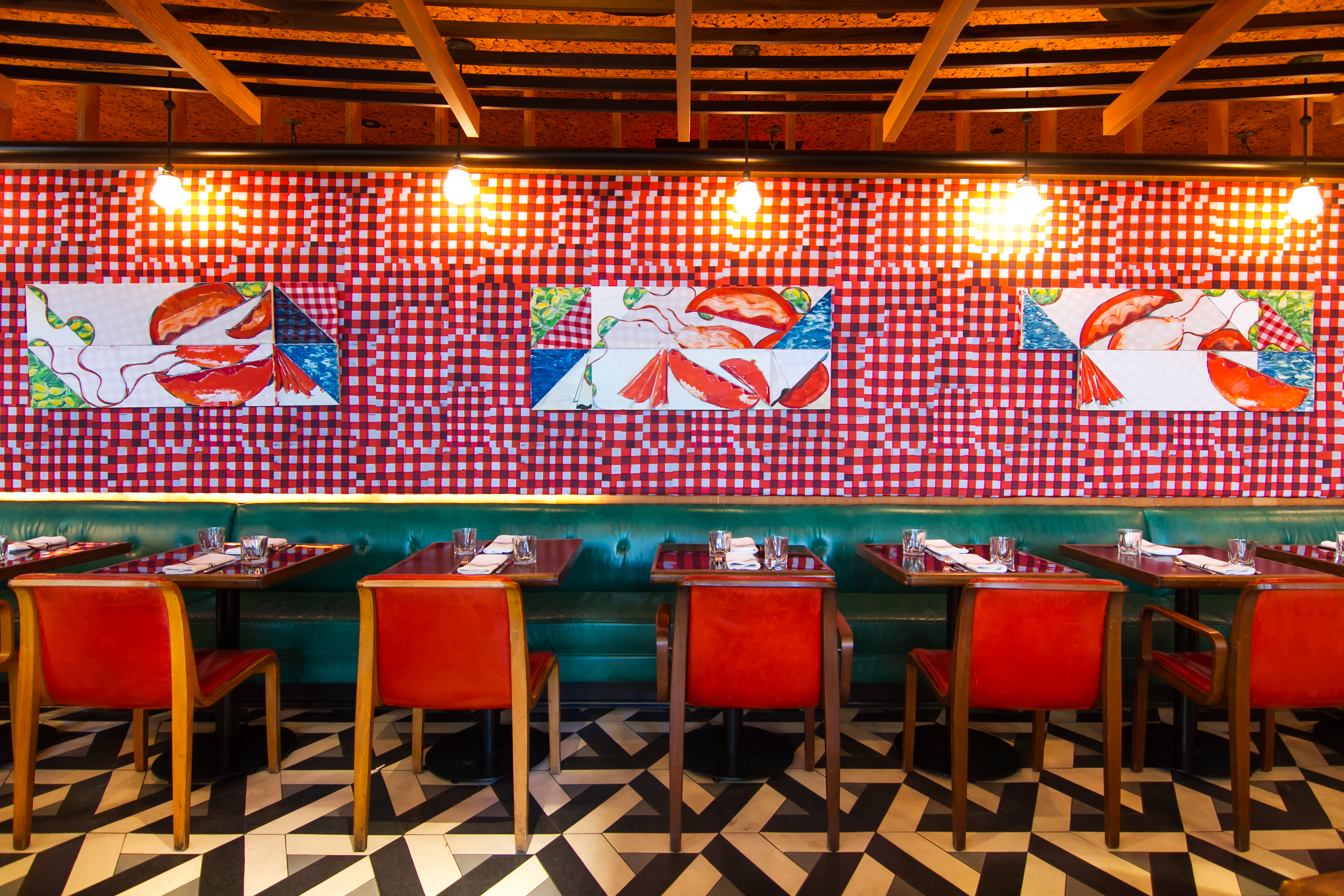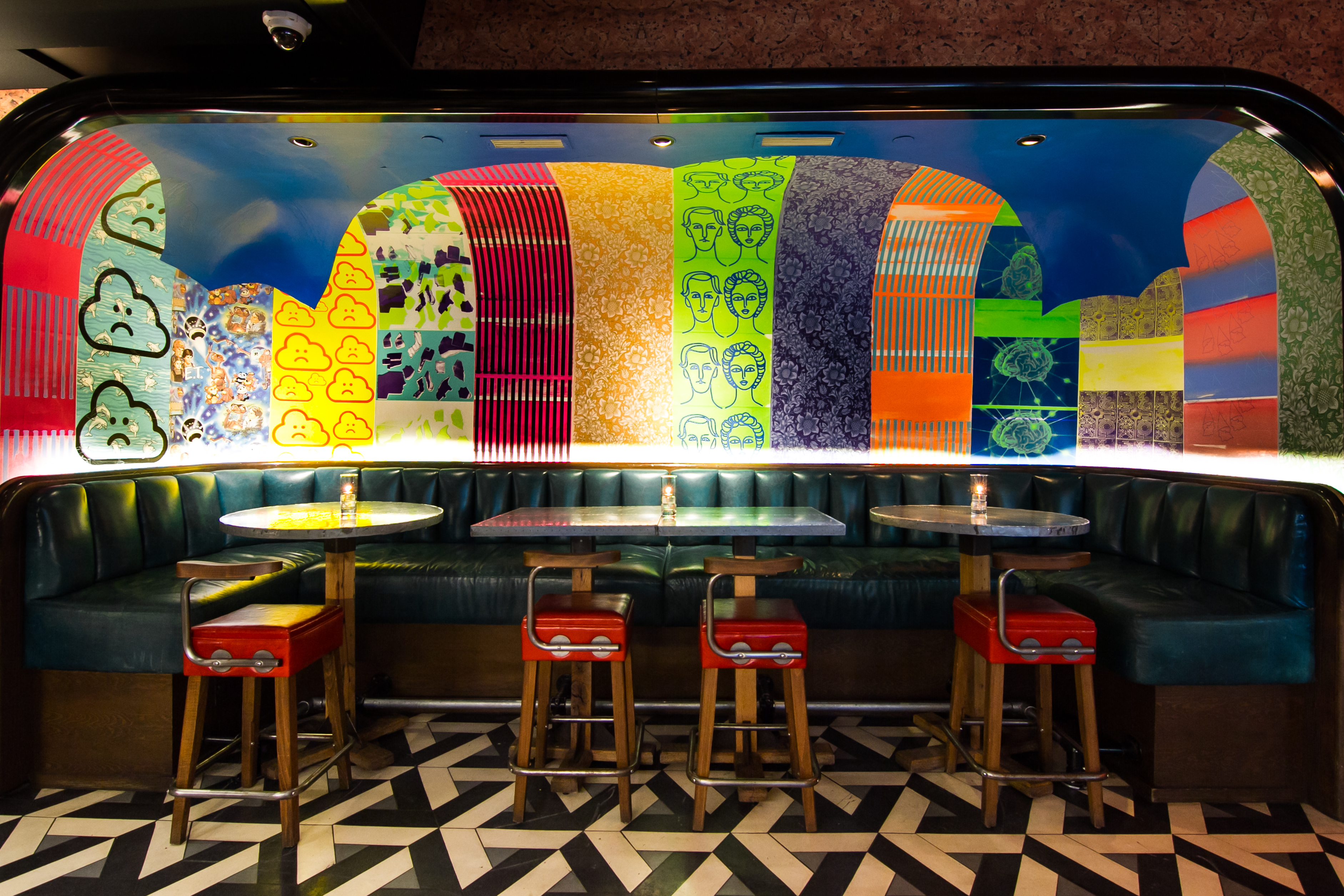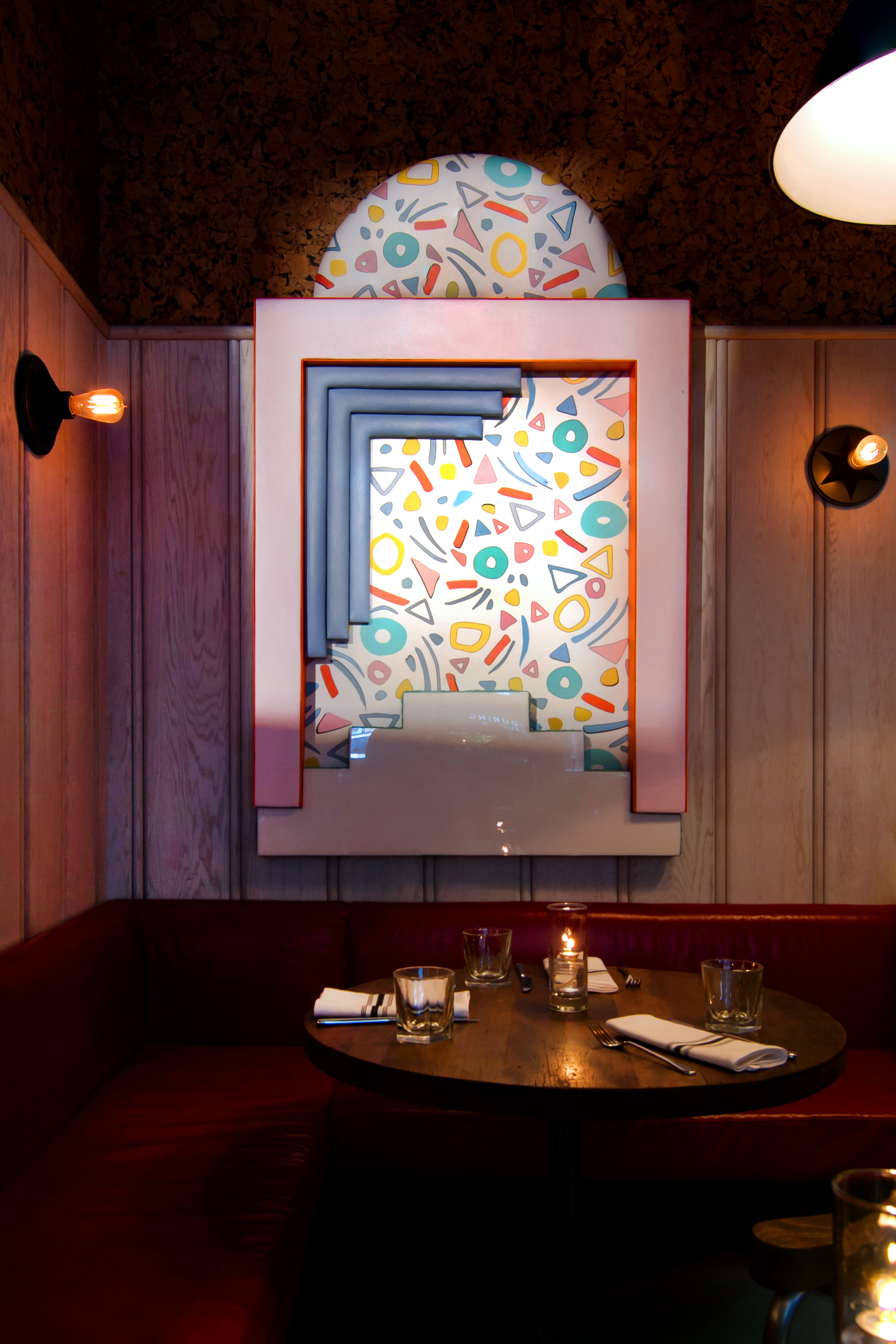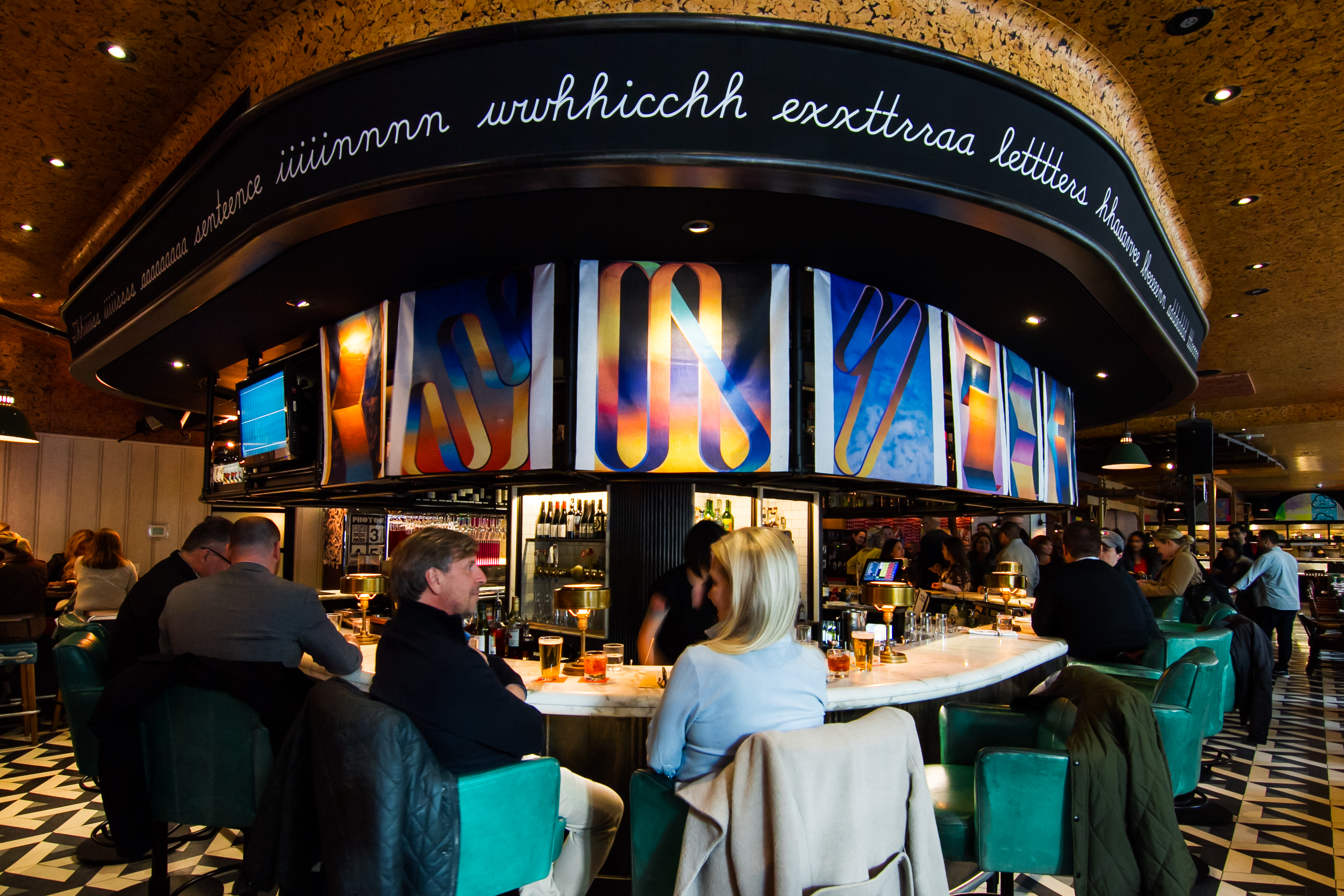



On Repeat
"On Repeat" at Drake One Fifty explores how graphic design and nostalgia are creating an art moment.
In the dining room, you will come across numerous works from UK artist George Little's Split Bisque collection. The title Split Bisque alludes to a combination of ‘split lobster’, an incredibly rare lobster known for its split coloration, for example indigo blue and red, and ‘bisque’, a creamy type of soup of French origin that’s traditionally made from passed, pressed and pureed shellfish. Lobsters function as symbols that probe nostalgia of traditional representation that have almost all disappeared. In decades prior, its cartoon-like shape had been used for the formatting of menus and for signage on the façade of restaurants, whereas nowadays, restaurants have no or only small signage. These pieces are also characterized by a conversation between loose abstraction and recognizable figuration, shown through physical collages of gingham tablecloths, damask linen and clips used for holding them down on a windy terrace. These visuals call back memories, for example to awnings jouncing in the wind in the evening’s light.
Italian artist Ludovica Gioscia's site-specific piece Dream About the Cerise Whale can be found in the Cove at Drake One Fifty. Gioscia's entire body of work is based around models, sketches and projects form the layered memory of her research, as well as the objects and trinkets that surround her in her studio. She sees every artifact as an accumulation of creative experiments that constantly trace temporal bridges between before and after, between past and future,
In the Tavern, see Number One Song in Heaven by Leah Guadagnoli. This piece is a three-dimensional wall-based construction, firmly rooted within the historical context of geometric design through disparate influences as Egyptian hieroglyphics, Islamic and Gothic stained glass, Bauhaus and Swahili architecture, Art Deco and The Memphis Group. Inspired by the patterns and surfaces which recollect the gaudy carpets, seating, and walls found in the waiting rooms and airports, casinos and movie theaters of decades past, Guadagnoli’s work suggests a deliberately ambiguous nostalgia—some works may recall the '80s and '90s, others the '50s and '60s. Assertively jutting from the wall, her multi-paneled sculptural painting breaks from the traditional picture frame, effectively blurring the line between painting and object.
Lastly, above the bar, you will find the bright, colourful works of NY artist Dan Perkins. Perkins’s works start out the old fashioned way: pencil sketches in notebooks annotated with measurements you might need an engineering degree to understand. From there, the pieces are scaled as desired, then painted, often with an airbrushed look and with colors and textures borrowed from the natural world. Perkins’s rigid geometric shapes conflict with the fluidity of his paint choices, creating a surreal tension between the natural and the manmade. It feels a wholly modern paradox, a reflection of our current binary existence–one that alters between apps/smartphones/computers and the real world.
